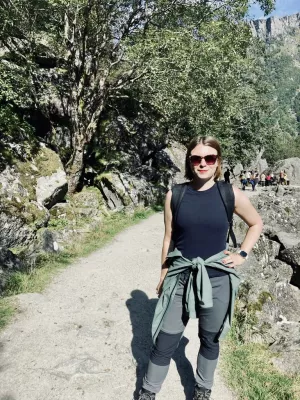
Kristin Doering
Forskare

Stable silicon isotope signatures of marine pore waters – Biogenic opal dissolution versus authigenic clay mineral formation
Författare
Summary, in English
Dissolved silicon isotope compositions have been analysed for the first time in pore waters (δ30SiPW) of three short sediment cores from the Peruvian margin upwelling region with distinctly different biogenic opal content in order to investigate silicon isotope fractionation behaviour during early diagenetic turnover of biogenic opal in marine sediments. The δ30SiPW varies between +1.1‰ and +1.9‰ with the highest values occurring in the uppermost part close to the sediment–water interface. These values are of the same order or higher than the δ30Si of the biogenic opal extracted from the same sediments (+0.3‰ to +1.2‰) and of the overlying bottom waters (+1.1‰ to +1.5‰). Together with dissolved silicic acid concentrations well below biogenic opal saturation, our collective observations are consistent with the formation of authigenic alumino-silicates from the dissolving biogenic opal. Using a numerical transport-reaction model we find that approximately 24% of the dissolving biogenic opal is re-precipitated in the sediments in the form of these authigenic phases at a relatively low precipitation rate of 56 μmol Si cm−2 yr−1. The fractionation factor between the precipitates and the pore waters is estimated at −2.0‰. Dissolved and solid cation concentrations further indicate that off Peru, where biogenic opal concentrations in the sediments are high, the availability of reactive terrigenous material is the limiting factor for the formation of authigenic alumino-silicate phases.
Publiceringsår
2016-10-15
Språk
Engelska
Sidor
102-117
Publikation/Tidskrift/Serie
Geochimica et Cosmochimica Acta
Volym
191
Dokumenttyp
Artikel i tidskrift
Förlag
Elsevier
Ämne
- Oceanography, Hydrology, Water Resources
Nyckelord
- Authigenic alumino-silicates
- Biogenic opal
- Pore water
- Silicic acid
- Silicon isotopes
Aktiv
Published
ISBN/ISSN/Övrigt
- ISSN: 0016-7037

